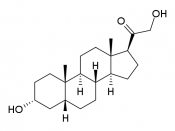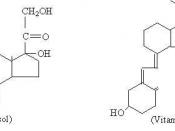A hormone is a product of an endocrine gland that is released into the blood. Hormones regulate development and activity in target tissues somewhere else at a distance in the body. Steroid hormones include cortisol, estrogen, and testosterone. Non-steroid hormones include choleckystokinin, epinephrine, dopamine, insulin, norepinephrine, serotonin, and vasopressin.
Steroid hormones, like estrogen, directly affect gene expression in their target cells. These hormones are lipid soluble and can diffuse directly through the the plasma membrane of a cell to bind with special receptors in the nucleus. Once the steroid hormones and receptors are bound together, the hormone receptor complex activates specific genes and cause those genes to be expressed. In the case of estrogen, the ovaries are stimulated to produce eggs.
Non-steroid hormones, such as insulin, cannot diffuse through plasma membrane. These hormones influence cytoplasmic activities through a second messenger, cAMP (cyclic adenosine monophosphate), which in turn affects the cellular biochemistry and metabolism.
Second messengers often initiate an enzyme cascade, where each step activates an enzyme that in turn activates the next enzyme in the series. These enzyme cascades amplify the effects of hormone molecules on target cell metabolism. When the blood sugar level lowers, insulin is released.
The same basic mechanisms are used in many diffferent hormone and target cell combinations, but the response is specific. Cells can only interact with only the hormones for which they have receptors. Likewise, cAMP activated metabolic enzymes differ in structure and function in different target tissues.





Good
Kinda short but informative.
6 out of 8 people found this comment useful.